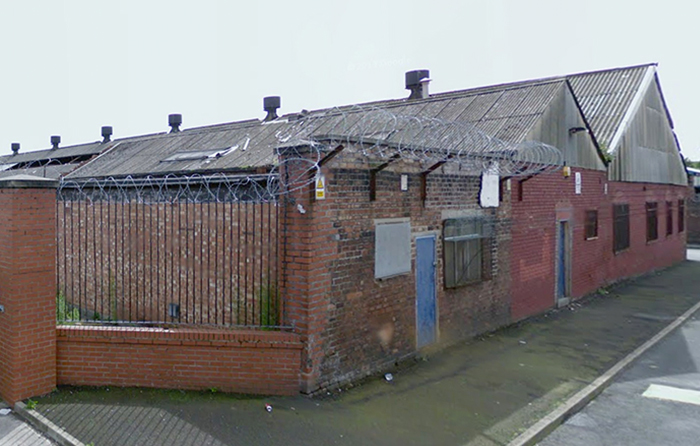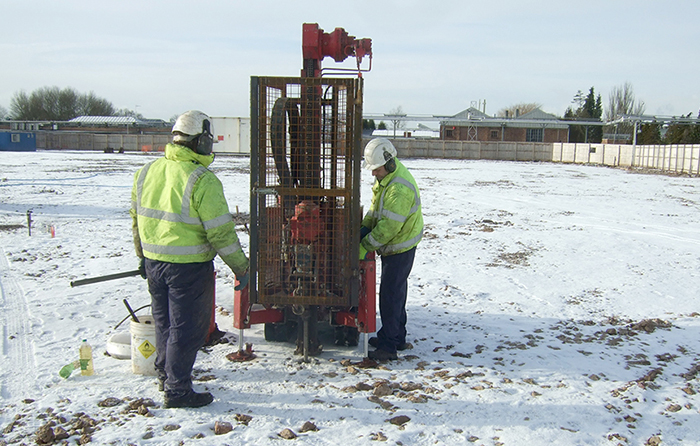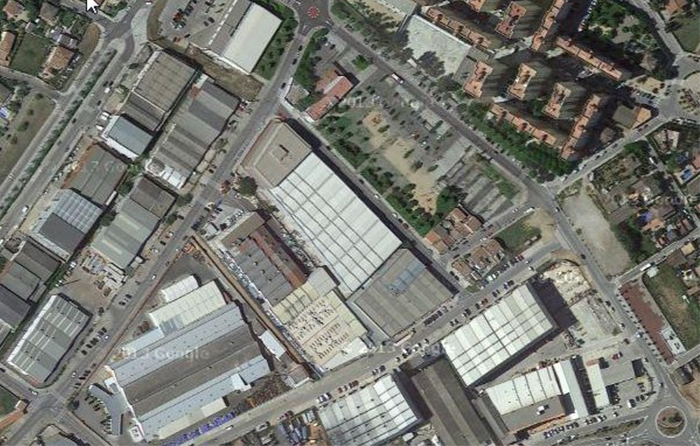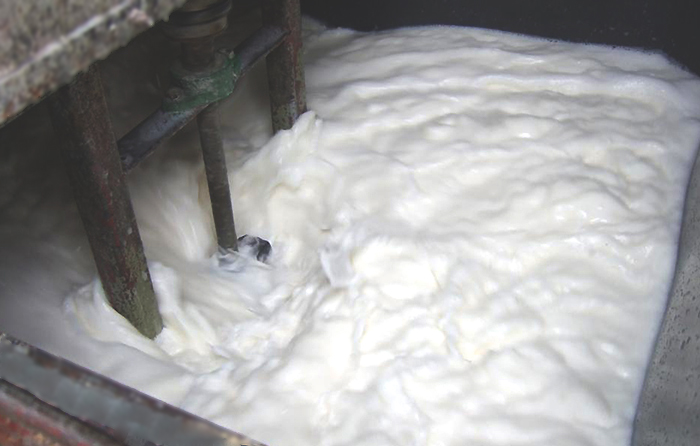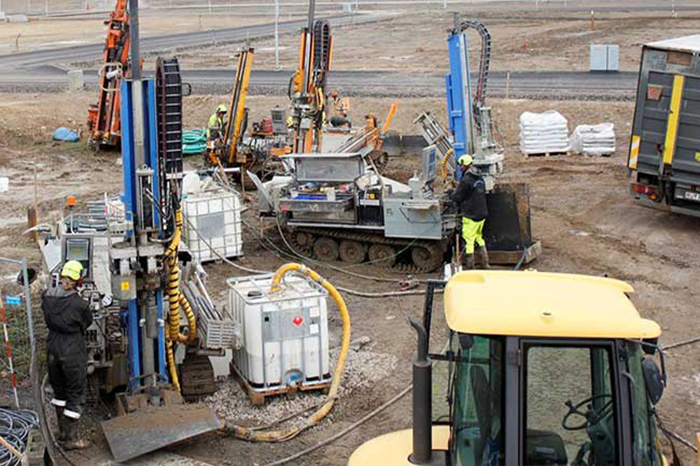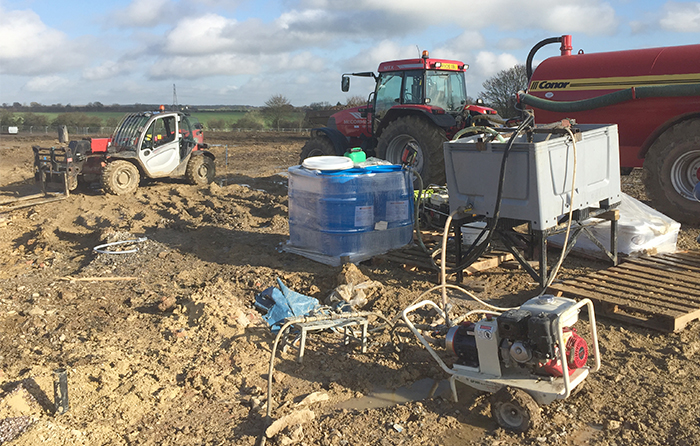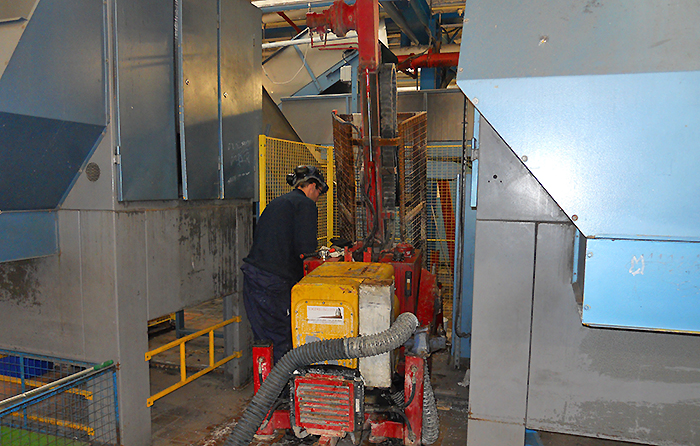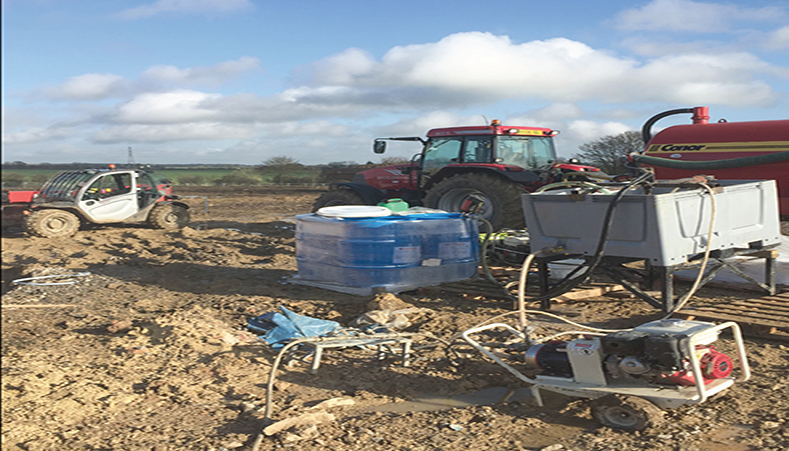Chlorinated Solvents Treatment at Former Dry Cleaner Site, UK
Excavation treatment and direct push application of HRC and HRC Primer, providing a reactive barrier at the down gradient site perimeter.Read More
Design Focused Remediation of a UK Defense Manufacturing Site
The remediation injection works, completed by REGENESIS between the demolition and construction phases, minimised impact on the site redevelopment programme.Read More
Active Manufacturing Plant, Cataluña, Spain
Chlorinated solvents treated with 3-D Microemulsion and HRC PrimerRead More
Successful Remediation of a Large Scale Chlorinated Solvent Plume
A single injection of 3-D Microemulsion on a wide injection grid remediates redevelopment site.Read More
Residential Redevelopment of Former Industrial Site, Helsingborg Sweden
Enhanced reductive dechlorination treats high concentrations of chlorinated solvents (TCE) in varying permeabilities at a former manufacturing facility. Read More
Remediation of Hexavalent Chromium in Bedrock at Former Saw Mill
Bedrock chrome VI contamination treated to non-detect levels in 2 months, expediting regulatory sign-off and unlocking the site for redevelopmentRead More
In Situ Remediation of PCE and DNAPL at Active Industrial Drycleaners
A highly sustainable form of remediation with estimated savings likely to exceed £500,000. Read More
$150,000 Cost Savings Achieved using Enhanced Anaerobic Bioremediation and Bioaugmentation
Site Closure Pending for Treatment of TCE at Former Manufacturing Facility
Project Highlights
- Pilot test moved to full-scale application after rapid decrease in TCE and daughter product contamination
- Cost for ERD injection was approximately $70,000, compared to more than $250,000 for the proposed-permanganate ISCO injection
- A no further action request has been submitted to the regulatory agency and is being reviewed for closure
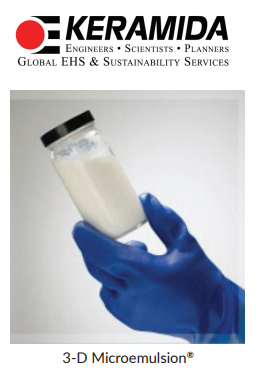
Project Summary
During due diligence for a property transfer at a former manufacturing facility in Indiana, TCE impacts in groundwater were discovered downgradient from a former above-ground storage tank (AST). Little to no TCE remained in the sandy soils within the source area but migrated into groundwater resulting in a plume extending off-site. An initial plan was proposed to address the TCE in groundwater via an in situ chemical oxidation (ISCO) approach using potassium permanganate. The consultant, KERAMIDA, believed this approach was overly aggressive, given the relatively low groundwater concentrations and lack of significant soil impacts. Also, the permanganate ISCO treatment was much more expensive and difficult to implement compared to a biological enhanced reductive dechlorination (ERD) approach. At the request of the regulatory agency, a pilot injection using 3-D Microemulsion® and BDI® Plus was performed in the source area and rapid reduction of TCE was observed within the first three months, accompanied by daughter product (cDCE and VC) production. Based on the results, the regulatory agency approved a full-scale injection one year later. Postinjection monitoring performed for two years following the full-scale injection indicated rapid decreases in TCE concentrations in all of the impacted wells with concurrent increases in daughter product concentrations. Daughter product concentrations also decreased significantly 9 months after 3-D Microemulsion and BDI Plus injection. At the conclusion of two years of post-injection monitoring, all of the wells in the treatment area were below the regulatory action levels for all compounds. A request for closure is currently being reviewed by the regulatory agency.
Remediation Approach
KERAMIDA developed a remedial plan that involved ERD and bioaugmentation, using 3-D Microemulsion and BDI Plus. The total cost for the injection was approximately $70,000, compared to more than $250,000 for the proposed permanganate ISCO injection. A total of 6,400 pounds of 3-D Microemulsion and 48 liters of BDI Plus were injected into 48 points spaced 15 feet apart in a grid pattern throughout the primary impacted area. The injection interval was approximately 9 to 18 feet below grade. The ERD/bioaugmentation approach saved more than $150,000 compared to the permanganate ISCO approach, likely more since the nature of ISCO as a contact-based remedial technology would likely have required multiple injections to achieve remedial goals.
Technology Description
3-D Microemulsion is an engineered electron donor material that offers a novel 3-stage electron donor release profile, pH neutral chemistry and is delivered on-site as a factory-emulsified product.
Bio-Dechlor INOCULUM Plus is an enriched natural microbial consortium containing species of Dehalococcoides sp. (DHC). This microbial consortium has since been enriched to increase its ability to rapidly dechlorinate contaminants during in situ bioremediation processes.
About the Consultant
 KERAMIDA Inc. is an engineering and consulting firm that serves industries, businesses, cities, and governments worldwide. They provide strategy and implementation services in: Sustainability, Green House Gases, Energy, Environmental Compliance, Remediation, Environmental Due Diligence, Brownfield Redevelopment, Plant Decommissioning, Health & Safety, Training, Risk Management, and ISO Management Systems. Established in 1988, KERAMIDA is headquartered in the historic Lockerbie Square district of Indianapolis, Indiana. The firm employs over 70 technical experts and support personnel in offices throughout the U.S., including Chicago, IL; Pittsburgh, PA; New York, NY; Los Angeles, CA, Sacramento, CA. KERAMIDA’s many principals have worked for over 25 years in the sustainability, environmental, health & safety, and remediation arenas, and are recognized leaders in their fields. Their engineers, scientists, and planners are renowned for delivering creative, integrated EHS solutions to a broad range of clients throughout the U.S. and abroad.
KERAMIDA Inc. is an engineering and consulting firm that serves industries, businesses, cities, and governments worldwide. They provide strategy and implementation services in: Sustainability, Green House Gases, Energy, Environmental Compliance, Remediation, Environmental Due Diligence, Brownfield Redevelopment, Plant Decommissioning, Health & Safety, Training, Risk Management, and ISO Management Systems. Established in 1988, KERAMIDA is headquartered in the historic Lockerbie Square district of Indianapolis, Indiana. The firm employs over 70 technical experts and support personnel in offices throughout the U.S., including Chicago, IL; Pittsburgh, PA; New York, NY; Los Angeles, CA, Sacramento, CA. KERAMIDA’s many principals have worked for over 25 years in the sustainability, environmental, health & safety, and remediation arenas, and are recognized leaders in their fields. Their engineers, scientists, and planners are renowned for delivering creative, integrated EHS solutions to a broad range of clients throughout the U.S. and abroad.
Combined Remedies Approach Reduces CVOCs up to 97% in 78 Days
Project Highlights
- Downtown Chicago site planned for multi-million dollar redevelopment
- Manufacturing operations caused CVOC impacts in groundwater of up to 6500 ug/L
- Redevelopment schedule required effective treatment with timely implementation
- Monitoring wells indicated up to 97% reduction of CVOCs 78 days post treatment
1m 18s reading time
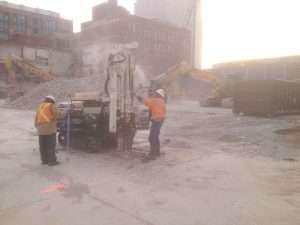
Project Summary
This site in downtown Chicago, was impacted by chlorinated solvents used in various historic manufacturing activities. DCE and TCE concentrations were recorded up to 7,440 µg/L in a sand formation over clay. As the site was to be redevelopment as a hotel and sports arena, and any programme delays would be extremely costly, the client needed a quick and permanent remedy to achieve the stringent target levels (of: total VOC MCL 567 µg/L and TCE MCL 242 µg/L) REGENESIS successfully remediated the groundwater to below target levels within the tight time window.
Treatment
The designed volumes of PlumeStop, HRC, and BDI Plus were successfully applied within the defined treatment zones (see map right) during the application event. A combined volume of 265 m3 of PlumeStop, HRC and BDI Plus was injected via 138 direct push injection points.
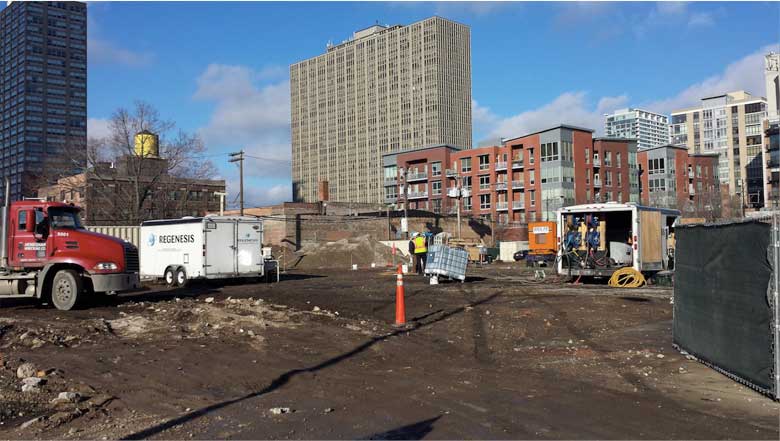
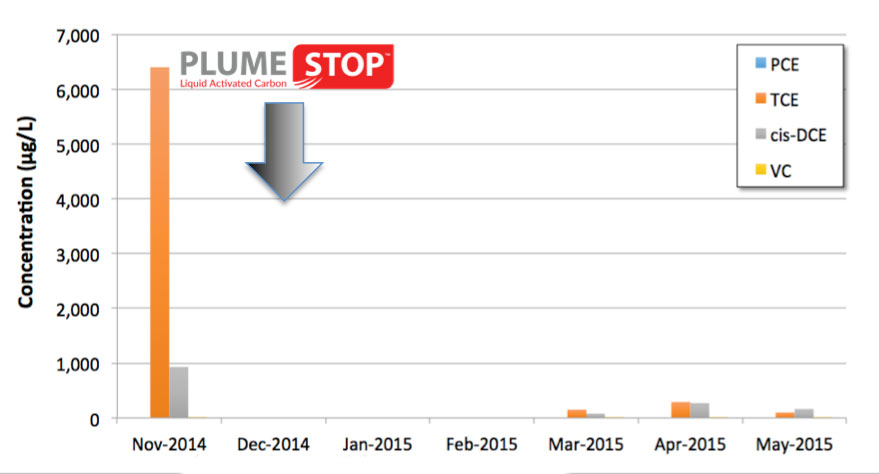
Results
78 days post-application, the two key validation wells (AW 3-3 and AW 3-2) observed 80% and 97% reduction in total CVOCs. BDI Plus was used to facilitate the bioaugmentation. As a result, the DHC sp. count and functional genes of the anaerobic metabolic pathways increased significantly from baseline measurements, as determined by QuantArray® analysis. This means that not only contaminant sorption is occurring, but that biodegradation is happening as well. The second and third monitoring round (at 108 and 138 days) confirm the production of breakdown products, indicating that enhanced reductive dechlorination (ERD) is ongoing. Regulatory sign-off is applied for.
What’s Special?
- Unsupported by PlumeStop, bioremediation would not have been an option for a site with such a tight programme. This project shows that accelerated bioremediation using Plumestop can compete with In Situ Chemical Oxidation on time
- The execution of this application was unique because of the tight project programme
- Rapid reduction in groundwater contamination: 80 – 97% from first sampling interval of the total solvents. The concentration levels in all wells are now compliant.
Technology Description
PlumeStop™ Liquid Activated Carbon™ is composed of very fine particles of activated carbon (1-2μm) suspended in water through the use of unique organic polymer dispersion chemistry. Once in the subsurface, the material behaves as a colloidal biomatrix binding to the aquifer matrix, rapidly removing contaminants from groundwater, and expediting permanent contaminant biodegradation.
HRC® is a controlled release, electron donor material, that when hydrated is specifically designed to produce a controlled release of lactic acid. The newly available lactic acid is critical for the production of hydrogen to fuel anaerobic biodegradation processes in soil and groundwater.
Bio-Dechlor INOCULUM® Plus is an enriched natural microbial consortium containing species of Dehalococcoides sp. (DHC). This microbial consortium has since been enriched to increase its ability to rapidly dechlorinate contaminants during in situ bioremediation processes.
Hexavalent Chromium Remediation at Former Saw Mill
Summary
REGENESIS were retained to carry out the remediation design and site application works to treat groundwater impacted with hexavalent chromium (Cr VI) on the site of a former saw mill in the United Kingdom, Europe. Metals Remediation Compound® (MRC) and 3-D Microemulsion® (3DMe) were applied into the groundwater to provide rapid reduction and immobilisation of the CrVI present. Groundwater samples collected 2 months after application were analysed for CrVI , returning non-detect results.
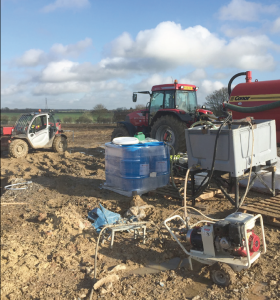
Treatment
Due to the ground conditions of weathered limestone, treatment was carried out via pre-installed treatment wells at 5 m spacing in the source area and 6 m in the barrier. MRC and 3DMe were co-applied into these wells to target the source area of contamination and to install a reactive barrier at the down-gradient edge of the site to protect a nearby watercourse. MRC and 3DMe provide a powerful combination of wide distribution and strong reducing and immobilising properties.
What’s Special?
- REGENESIS’ injection team completed the site works ahead of schedule to allow the groundwork contractor to prepare the site for housing development.
- The use of MRC and 3DMe allowed for wide spacing of the injection wells and therefore lower drilling costs.
- The treatment approach achieved rapid reductions from up to 15,000 μg/L of Cr(VI) to non-detect within two months, expediting regulatory sign-off and unlocking the site for redevelopment
Technology Descriptions
Metals Remediation Compound (MRC) removes metals such as dissolved Cr(VI) from groundwater via in situ immobilisation (precipitation and/or sorption to soil particles).
3-D Microemulsion is an engineered electron donor material that offers a novel 3-stage electron donor release profile, pH neutral chemistry and is delivered on-site as a factory-emulsified product..

 Americas
Americas Europe
Europe Français
Français Deutsch
Deutsch Italiano
Italiano Español
Español